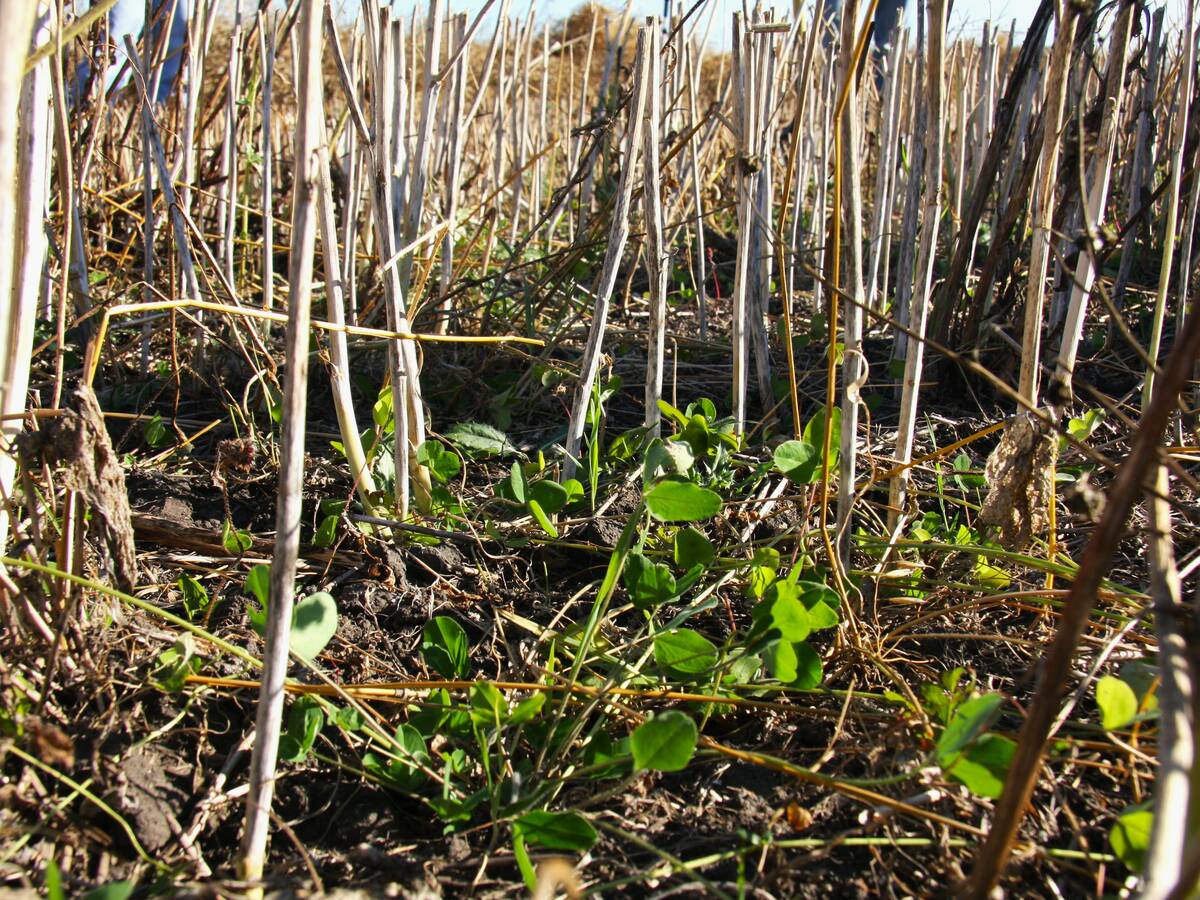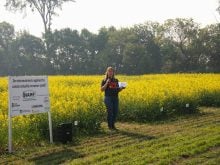Research is starting to show that straight cutting canola is likely the way to go.
“Even when we look at less than ideal harvest timing, the losses are not much greater than those experienced with swathed crop,” Chris Holzapfel of the Indian Head Agricultural Research Foundation told farmers attending the Grain Expo at Canadian Western Agribition in Regina last week.
The non-profit group has conducted more than five seasons of straight cutting canola research and has also collaborated with Wheatland Conservation Area in Swift Current, Sask.
Read Also

Saskatchewan project sees intercrop, cover crop benefit
An Indigenous-led Living Lab has been researching regenerative techniques is encouraging producers to consider incorporating intercrops and cover crops with their rotations.
Based on this research, Holzapfel is suggesting producers evaluate their own production systems to see if straight cutting works for them.
“Swathing has its advantages. A good windrow laid into a good stubble is usually a pretty good bet. And you can get on with the rest of harvest and come back for the canola after your other crops,” he said.
“There are times when you need to swath. When it’s badly lodged, with a lot of green material and variability, it can even out those problems.”
Holzapfel said some producers have suggested that they would consider moving to single pass harvesting of their canola to reduce the amount of green seed in their canola samples.
However, he said his research has found no real advantages because green seed can be just as prevalent in both methods. Harvest timing is more critical in straight combining.
Research at the University of Saskatchewan is showing that total seed losses of 10 percent are common in canola with both swathing and straight cutting.
“That is a lot of crop left in the field either way,” said Holzapfel.
Shawn Senko of the Canola Council of Canada said his group plans to increase average yields to 52 bushels per acre from 32 bu. by 2025.
Eight bu. is expected to come from genetics, including controlling pod shattering and dropped pods.
However, two bu. will come from harvest management, Senko said much of that will likely come from strategies such as straight cutting.
BASF research has recently shown that straight cutting improves pod fill by allowing the plant to mature.
As well, the Indian Head research has found that the increased seed size of an unswathed crop is allowing for greater gross yield when combined with the additional filling.
This means that almost equal grain is harvested using either process after taking into account harvesting losses due to shattering and pod drop in standing crop.
“And you save the cost of swathing,” said Holzapfel.
“Ideal swathing timing is as important as it is for straight (harvesting) the crop.”
The researchers in Indian Head had found that waiting for 60 percent seed colour change could increase harvested yields by five bu. per acre.
Wind is a concern when straight cutting, but the widespread windstorms of 2010, which caused 40 to 50 percent losses in swathed crops, showed both methods can be risky.
Swathing does have advantages for producers with highly variable fields that are too difficult to combine in zones.
“We have a lot of potholes and small sloughs and that can result in wet spots,” Holzapfel said.
Genetics play a big role in reducing shattering and pod drop.
Bayer’s Invigor 5440 has been a consistent standout for its ability to remain intact for straight combining, but the company’s new L140P appears to be better yet, said Holzapfel.
Last year’s trials of the Bayer variety found a two percent advantage over 5440 for late-stage swathing and four percent in straight cutting. They also found that straight cutting canola yielded a three to seven percent advantage over swathing.
Canola at the Indian Head research centre wasn’t harvested until Oct. 19 this fall, and the standing crop had a visual shatter of .5 to 5.4 percent.
“All of it was pretty good,” Holzapfel said. “The L140P and Pioneer’s 45H32 were both really good.”
Shatter and pod drop accounted for a harvest loss of seven percent at the Indian Head centre over the three years when harvest was delayed. Losses were as low as six percent and as high as 7.7.
Losses in some hybrids were as high as 14 percent in shorter-term studies.
“Economically, it works out pretty evenly, but under tough conditions there are slight genetic advantages that farmers should take into consideration when moving to (straight combining),” he said.
Losses fall to 2.3 percent in standing canola under ideal harvesting conditions. Three years of research at Indian Head showed that Pioneer’s 46H75 had a one percent advantage under these circumstances.
Pod drop represents a little less than half of the losses. The longer the crop remains out, the greater the loss.
“Pod sealants can work under the right conditions, but if you are facing wet, then dry, then wet situations and much delayed harvests, then they have shown no advantage,” he said.
“We haven’t found a case for using them.”
Machinery can make a significant difference in losses.
The Indian Head centre quickly found that stripper headers were not effective in canola and that draper headers had a slight advantage over auger type units. The centre is currently testing a Honeybee draper header.
The extension headers that allow the cutter bar to be shifted forward for crops such as canola showed a clear advantage over all other systems, with a three to five bu. per acre savings. Testing is ongoing with BISO, Zürn and New Holland’s rigid, auger type 760CG Varifeed.
Claas also offers a version, but it is not part of the prairie research.
Vertical knives that cut crop and table crop dividers are showing reduced losses, and Holzapfel said these tools will likely be part of canola’s future on the Prairies.
“And when it comes to paint colours, well, sorry boys, all (machinery) brands come out about evenly,” he said.
Testing showed that rotary combines perform slightly worse than conventional when it comes to canola losses.
He said adding burn-down products such as Heat to glyphosate is delivering good results, improving early harvestability in standing crops because of the rapid and even dry-down of the crop after application.
“It also reduces any green weeds in the field and provides additional weed control, so I imagine it will find its way into a lot of (single pass harvested canola) fields in the future.
For more information, contact Holzapfel at cholzapfel@iharf.ca or call 306-695-4200.















